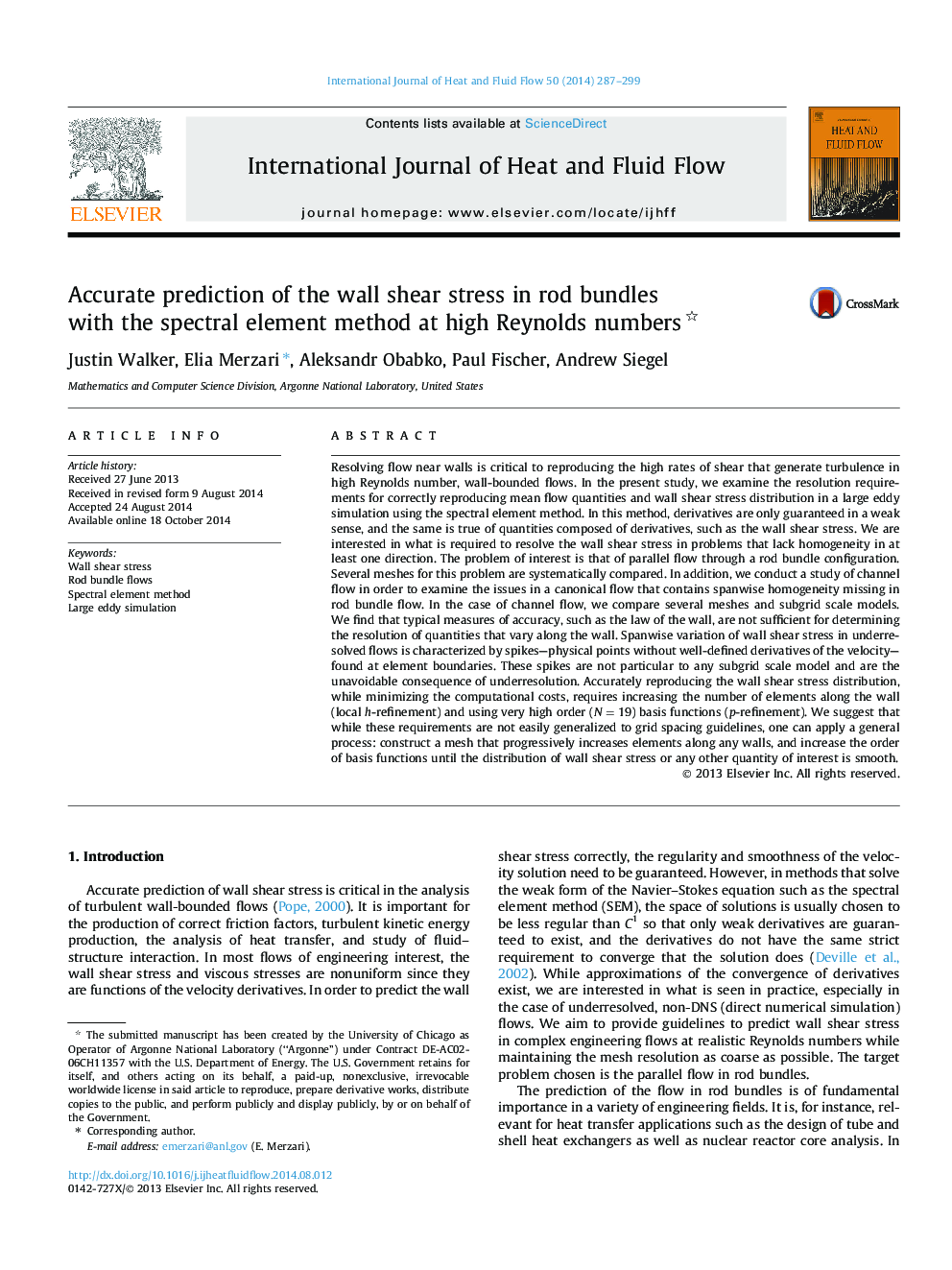| کد مقاله | کد نشریه | سال انتشار | مقاله انگلیسی | نسخه تمام متن |
|---|---|---|---|---|
| 7053628 | 1457631 | 2014 | 13 صفحه PDF | دانلود رایگان |
عنوان انگلیسی مقاله ISI
Accurate prediction of the wall shear stress in rod bundles with the spectral element method at high Reynolds numbers
ترجمه فارسی عنوان
پیش بینی دقیق تنش برشی دیواره در دسته های میله ای با روش عنصر طیفی در اعداد رینولدز بالا
دانلود مقاله + سفارش ترجمه
دانلود مقاله ISI انگلیسی
رایگان برای ایرانیان
کلمات کلیدی
استرس برشی دیوار، بسته نرم افزاری رد جریان دارد روش عنصر طیفی، شبیه سازی گردابی بزرگ،
موضوعات مرتبط
مهندسی و علوم پایه
مهندسی شیمی
جریان سیال و فرایندهای انتقال
چکیده انگلیسی
Resolving flow near walls is critical to reproducing the high rates of shear that generate turbulence in high Reynolds number, wall-bounded flows. In the present study, we examine the resolution requirements for correctly reproducing mean flow quantities and wall shear stress distribution in a large eddy simulation using the spectral element method. In this method, derivatives are only guaranteed in a weak sense, and the same is true of quantities composed of derivatives, such as the wall shear stress. We are interested in what is required to resolve the wall shear stress in problems that lack homogeneity in at least one direction. The problem of interest is that of parallel flow through a rod bundle configuration. Several meshes for this problem are systematically compared. In addition, we conduct a study of channel flow in order to examine the issues in a canonical flow that contains spanwise homogeneity missing in rod bundle flow. In the case of channel flow, we compare several meshes and subgrid scale models. We find that typical measures of accuracy, such as the law of the wall, are not sufficient for determining the resolution of quantities that vary along the wall. Spanwise variation of wall shear stress in underresolved flows is characterized by spikes-physical points without well-defined derivatives of the velocity-found at element boundaries. These spikes are not particular to any subgrid scale model and are the unavoidable consequence of underresolution. Accurately reproducing the wall shear stress distribution, while minimizing the computational costs, requires increasing the number of elements along the wall (local h-refinement) and using very high order (N=19) basis functions (p-refinement). We suggest that while these requirements are not easily generalized to grid spacing guidelines, one can apply a general process: construct a mesh that progressively increases elements along any walls, and increase the order of basis functions until the distribution of wall shear stress or any other quantity of interest is smooth.
ناشر
Database: Elsevier - ScienceDirect (ساینس دایرکت)
Journal: International Journal of Heat and Fluid Flow - Volume 50, December 2014, Pages 287-299
Journal: International Journal of Heat and Fluid Flow - Volume 50, December 2014, Pages 287-299
نویسندگان
Justin Walker, Elia Merzari, Aleksandr Obabko, Paul Fischer, Andrew Siegel,
